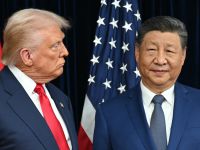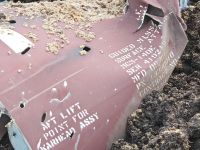Should meetings at the highest level fail to ease tensions between Uganda and Rwanda, the two armies would most likely fight it out in the Democratic Republic of Congo's (DRC's) Nord-Kivu province, rather than on their shared border, according to analysts in Kigali.
In the wake of escalating friction, accusations and counter-accusations, defence ministers from both countries met Monday and pledged to ease tension, to prevent rebels and dissidents from using their territory to destabilise the other's regime, and to allow independent observers into border areas to assess security disputes.
And on November 6 in London, Ugandan President Yoweri Museveni is set to hold another fence-mending meeting with his Rwandan counterpart Paul Kagame.
Once the firmest of allies, the neighbours saw their relationship begin to deteriorate after both sent troops into the DRC to back rebels there.
Ugandan troops fought fierce battles with soldiers from Uganda on three occasions in the northeastern city of Kisangani.
The most likely theatre for further hostilities is now an area of Nord-Kivu province, with the elevated town of Kanyabayongo as its epicentre.
While Kisangani was some 500 kilometers (300 miles) from either country, this new potential battlefield lies close to the doorstep of both, greatly increasing the risk that any skirmish could escalate dramatically.
Kanyabayonga lies atop a mountain that juts above the Rwindi plain. The town is situated 140 kilometers (85 miles) by road north of Goma, the DRC town where the Rwandan-backed Congolese Rally for Democracy (RCD) rebel group has its headquarters.
Uganda is about 60 kilometers (37 miles) to the east as the crow flies, rather longer by road.
Kanyabayonga marks the informal division between areas of DRC controlled by the RCD and Rwandan soldiers, and that in the hands of a Kampala-backed spin-off of the rebel group, RCD-ML, and allied Ugandan soldiers.
Last week, a Ugandan government newspaper said Rwanda had overrun the town, a claim that UN observers and journalists found to be false on visiting it.
In fact, Kanyabayonga is still controlled by RCD-ML, which is led by Mbusa Nyamwisi, who can count on two to three thousand local armed men, mostly of the Nande ethnic group.
Although Ugandan troops are not confirmed to be present in Kanyabayonga, they have, according to several sources, taken positions in three nearby locations, Loufo, about 10 kilometers (six miles) to the northwest, Kirumba, some 15 kilometers (ten miles) to the north, and Lutunguru, about 40 kilometers (25 miles) to the northwest.
An AFP reporter saw Rwandan government forces along the Kabasha escarpment overlooked by Kanyabayonga and on the main north-south road.
Residents said Rwandan soldiers are also stationed to the west, at Kibirizi, and at Vitshumbi, to the east and on the shores of Lake Edward.
"The road from Goma is in very good condition. We could send reinforcements very quickly, so we do not need to deploy heavily up there," a Rwandan military source said, rejecting the suggestion of an important military build-up.
A 26-kilometer (16 mile) buffer zone separates the two sides. In theory, the Ugandans and their allies have a strategic advantage in occupying the higher ground that overlooks areas patrolled by the Rwandans.
On the other hand, the great size of the terrain in question favours the Rwandan army, known for its mobility -- KIGALI, (AFP)
© 2001 Al Bawaba (www.albawaba.com)







